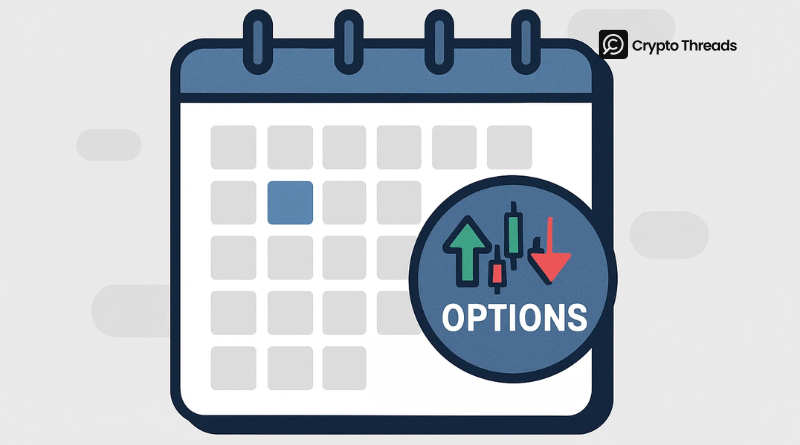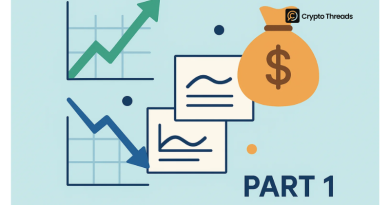Options 101: Calendar strategies with Options
In the previous part, we have learnt about delta neutral strategies, which bet on volatility at some specific times without guessing the direction. In this part, we will learn how to harness the time decay effect of shorter and longer term options.
Time decay in options trading
Time decay is one of the most important factors in pricing options and is included in many pricing models. However, before learning complicated mathematical models in the following blogs, let’s figure out its intuition.
By definition, time decay is how fast the value of an options contract declines over a period of time. But what is the reason for this phenomenon?
In the first part of this series, you have learnt that options were originally and mainly created for hedging with the uncertainty of underlying assets, just like car insurance. Because the closer it comes to expiry date, the less possibility for an accident to happen, the insurance price is becoming less valuable. Similarly, an option loses value as time runs out because there’s less time for the stock to make a favorable move.
Imagine you buy a call option with a strike price of $100 when the stock is at $100, expiring in 3 months. The option costs $5, all extrinsic value (since it’s at-the-money, there’s no intrinsic value).
- After 1 month, if the stock is still $100 and volatility hasn’t changed, the option might be worth $3.50 because there’s less time for the stock to move above $100.
- With 1 week left, it might drop to $0.50, as the chance of a big move is now tiny.
- On expiration day, if the stock is still $100, the option is worthless (no intrinsic or extrinsic value).
Long Calendar Spread: Harnessing Time Decay in Options Trading
A Long Calendar Spread involves buying a longer-term option and selling a shorter-term option with the same strike price and underlying asset, typically using calls or puts.
The idea of a long calendar spread is to sell shorter-term options for a small premium, while buying longer-term options with the same type (call or put), strike price and underlying asset. By hedging with longer-term options, you can limit the loss to a certain extent.
Let’s take a look at an example:
📌 Current Situation:
Underlying Asset: Bitcoin (BTC)
Current Price: $100,000
📌 Action: You expect BTC to stay near $100,000 in the short term, so you set up a long calendar spread to profit from time decay:
- Buy 1 Call Option (3 months to expiration) with a strike price of $100,000 for a $6,000 premium.
- Sell 1 Call Option (1 month to expiration) with a strike price of $100,000 for a $2,000 premium.
- Total cost to open the position: $6,000 (long call) – $2,000 (short call) = $4,000 net debit.
🔼 Scenario 1: BTC Rises to $110,000
- Short Call (1-month): Becomes in-the-money (ITM) by $10,000. It’s likely assigned, costing $10,000 to cover (offset by the $2,000 premium received). Alternatively, you buy it back before expiration to avoid assignment, likely at a loss due to its intrinsic value.
- Long Call (3-month, now 2 months left):
- What Happens: At BTC = $110,000, the long call is ITM with $10,000 intrinsic value ($110,000 – $100,000) plus remaining extrinsic value (e.g., $2,000 for time and implied volatility), making it worth ~$12,000. Time decay (theta: -20/day) has reduced its value slightly over the month, but the price increase boosts its intrinsic value significantly.
- Your Actions:
- Sell the Long Call: You sell it to other traders in the options market for ~$12,000 to realize its value. After accounting for the short call’s loss (e.g., $10,000 – $2,000 = $8,000) and the initial debit ($4,000), your net profit is ~$12,000 – $8,000 – $4,000 = $0 (breakeven or slight profit/loss depending on exact prices).
- Hold the Long Call: If you’re bullish on BTC rising further, you could keep the long call (now a standalone long position) for potential gains, but you’d face continued time decay and risk if BTC drops.
- Roll the Spread: Buy back the short call (or let it expire) and sell a new short call (e.g., 1-month $110,000 strike) to collect more premium, maintaining the calendar spread structure. This keeps the long call active in a new spread.
- Most Common Action: Selling the long call to other traders is typical to close the spread and lock in gains or limit losses, especially if the large price move makes the spread less profitable due to the short call’s intrinsic value.
🔽 Scenario 2: BTC Falls to $95,000
- Short Call: Out-of-the-money (OTM), expires worthless, allowing you to keep the full $2,000 premium. Time decay (theta: -50/day) maximizes your gain on this leg.
- Long Call (3-month, now 2 months left):
- What Happens: At BTC = $95,000, the long call is OTM, with no intrinsic value. It retains extrinsic value (e.g., $4,500) due to 2 months remaining and implied volatility (IV). Time decay has reduced its value from $6,000 to $4,500 over the month, a loss of $1,500.
- Your Actions:
- Sell the Long Call: You sell it to other traders for $4,500 to close the position. Net outcome: $4,500 (long call sale) + $2,000 (short call premium) – $4,000 (initial debit) = $2,500 profit.
- Hold the Long Call: If you expect BTC to rebound, you could hold the long call, but you risk further time decay and loss of extrinsic value.
- Roll the Spread: Sell a new 1-month call (e.g., $95,000 strike) to collect more premium, using the long call in a new calendar spread. This reduces risk and leverages remaining time value.
- Most Common Action: Selling the long call to other traders is common to realize the profit, as the short call’s expiration maximizes time decay benefits, and closing the spread locks in gains.
➡️ Scenario 3: BTC Stays at $100,000
- Short Call: At-the-money (ATM), expires worthless due to no intrinsic value, yielding the full $2,000 premium. Time decay (theta: -50/day) works fully in your favor.
- Long Call (3-month, now 2 months left):
- What Happens: At BTC = $100,000, the long call is ATM, with no intrinsic value but significant extrinsic value (e.g., $5,500) due to 2 months left and IV. Time decay has reduced its value from $6,000 to $5,500, a modest loss of $500.
- Your Actions:
- Sell the Long Call: You sell it to other traders for $5,500 to close the position. Net profit: $5,500 (long call sale) + $2,000 (short call premium) – $4,000 (initial debit) = $3,500.
- Hold the Long Call: If you expect a future move, you could hold it, but time decay continues to erode value.
- Roll the Spread: Sell a new 1-month call (e.g., $100,000 strike) to collect additional premium, keeping the long call in a new spread to extend profitability.
- Most Common Action: Selling the long call to other traders is typical, as this is the ideal scenario where the short call’s rapid decay maximizes profit, and selling the long call captures its remaining value.
🔄 Breakeven Points:
The breakeven range depends on the long option’s value at the short option’s expiration. Exact breakeven points vary, but the strategy profits most when BTC stays near $100,000, maximizing the short option’s time decay.
As you can see, a long calendar spread offers limited risk (the net debit paid, $4,000) and profits from the faster decay of the short option, with potential gains enhanced by stable prices and rising implied volatility (IV) for the long option. The maximum loss is the initial debit, while the profit potential is capped but flexible based on adjustments.
Note: The strategy thrives when the short option’s implied volatility is high (maximizing premium received) and the long option’s IV rises over time. Always monitor theta, vega, and liquidity, and consider rolling the short option to extend the trade’s profitability.



